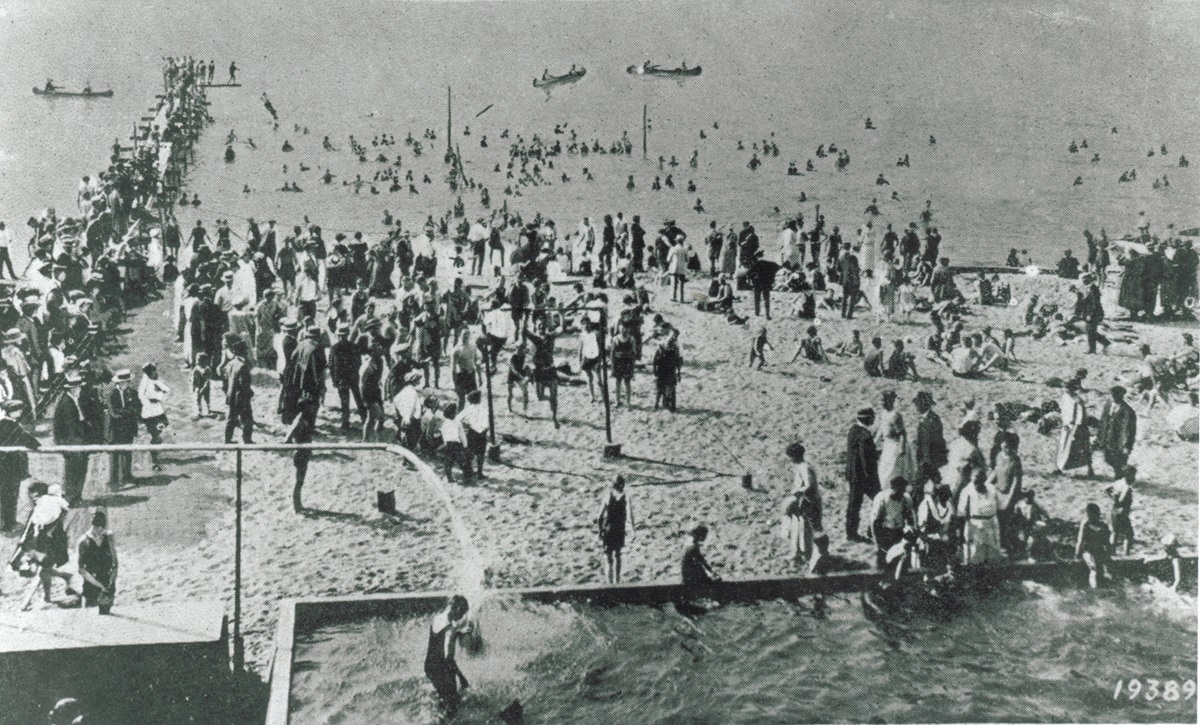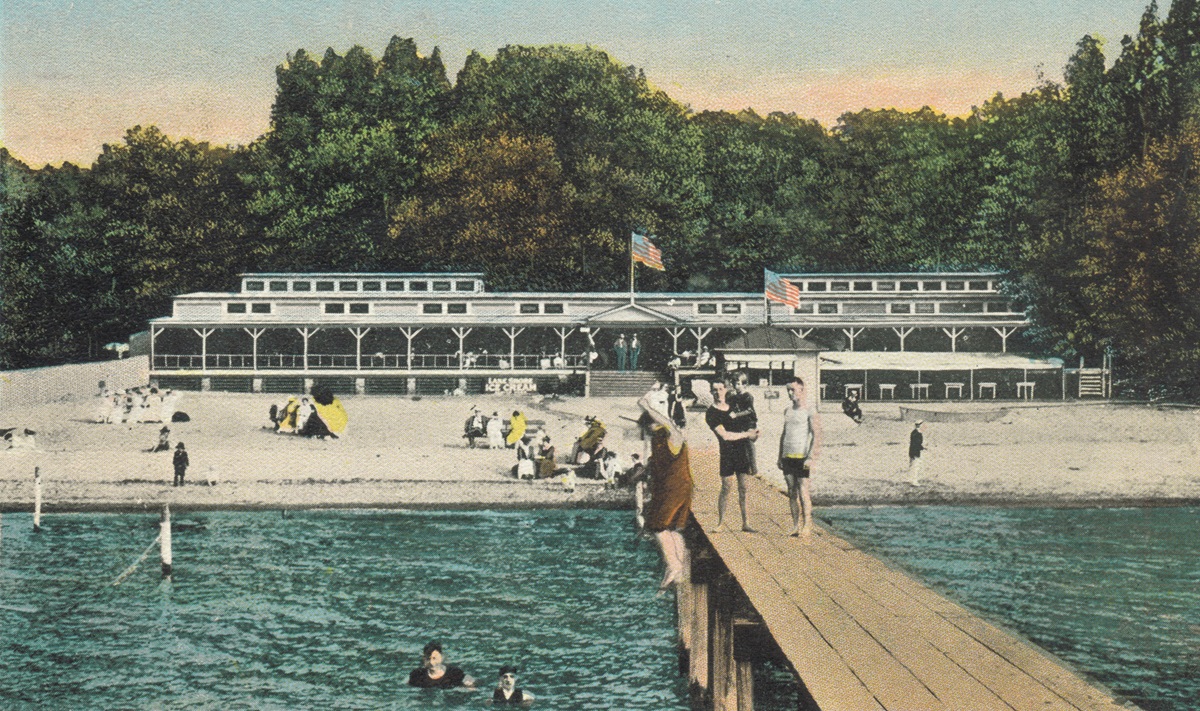I can vouch for every word in the title. When Steve Gorman, park president, led me down the gated path to Waldameer’s beach, not one unruly character got in my way. Actually, no one got in my way. Once visited by thousands every day, no beachgoers have crowded its shore in over 60 years. The only sounds were our footsteps in the calf-high grass and a light breeze whispering through the trees. Where did all the people go? And how did they fit on a beach only a bit longer than a football field along with a bathhouse, toboggan slide, pier, and rows of cottages?

The Waldameer beach included its own swimming pool. Photo courtesy of Waldameer
The turn of the 19th century was exciting for the Erie area. Residents had long been wanting an affordable, family-friendly summer swimming spot and Waldameer was it. In June of 1900, the Erie Electric Trolley Company began laying ties and moving its trestle to create a walk from Waldameer’s bluff to its beach 70 feet below. Having purchased the former 65-acre Hoffman’s Grove in 1896, easy access had been delayed by the estate of W.L. Scott who was laying claim to all lakefront property from the bay to the Head (entrance to Presque Isle).
While the 10-acre picnic grove at the top of Waldameer’s bluff was pleasant, the beach at its bottom was the real draw. By summer of 1901 planking had been laid on the trestle, creating a boardwalk that wound down the ravine, across the lagoon, and to the beach. Built around tree trunks, the boardwalk was strung with thousands of lights powered by the park’s own generator. Three spring-fed streams provided water to picnickers and beachgoers, with ice available from the ice house for “a nominal figure.”

A bathhouse was once located on Waldameer Beach. Photo courtesy of Waldameer
In 1901, the Erie Daily Times announced that a bathhouse would be built on the beach along with other improvements. Designed by Erie architect Joseph Frank, the long-awaited bathhouse opened for the 1903 season. Built in the colonial style, it was 110 feet long (a bit longer than a basketball court) and 40 feet wide. With 160 single changing rooms and 8 for families, its center hall divided the building into an east wing for women and a west wing for men. Basins were located along the hallways so that swimmers could rinse off sand before dressing. Bathing “costumes” were available to rent (making my skin crawl) along with rowboats and canoes for paddling the lagoon. Rocking chairs lined an open veranda facing the lake for those not wishing to swim. The cost to build was estimated at $7,800.
Waldameer was fast becoming the joy spot of Erie with up to 4,000 visitors per day. Almost every Sunday school in the area reserved its groves for picnics. Also booking were businesses and organizations from cities like Pittsburgh and Cleveland. With 400 feet of waterfront, a sandy beach, and a swimming area with no undertow, it was a perfect spot for family events. No liquor was allowed, with “no drunken persons, no rough talk, and no boisterous demonstrations permitted.”
Sometime during Waldameer’s early years, a ride called the Whirly-Gig (or Razzle Dazzle) was located on the beach. Not for the faint-hearted, little is known about how long it graced the shore. But a better ride was yet to come. In 1904, the toboggan slide burst upon the scene.
Coming soon:
Read more about the toboggan slide and the disappearance of Waldameer Beach
